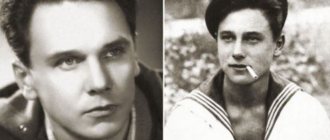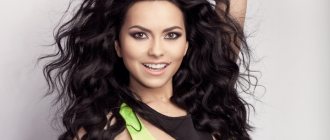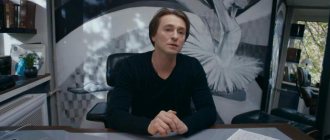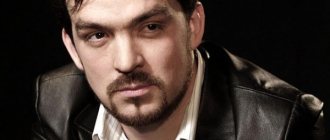Frida Kahlo is one of the most prominent figures in twentieth-century art. Despite the terrible accident that changed her whole life, Frida managed to find herself, become one of the best artists in the world and maintain her fortitude until her last days.
In this article you will learn about:
- Frida Kahlo's childhood;
- the beginning of an artistic career;
- difficult relationship with Diego Rivera;
- recognition of Frida in America;
- famous quotes from the artist.
Portrait of Frida Kahlo, 1926
Frida's childhood
Frida Kahlo Calderon was born in the village of Coyoacan on the outskirts of Mexico City on July 6, 1907, to the family of photographer Guilleremo Kahlo and Matilda Calderon. Kahlo claimed that she was born in the famous azure house, which is now photographed by thousands of tourists coming to Mexico City, but in fact the birth took place in a neighboring house where Frida's grandmother lived.
At the age of six, Kahlo fell ill with polio - a disease that usually affects the nervous system and can lead to paralysis of the limbs or the entire body. In Frida's case, the disease affected her right leg, causing it to become thinner than her left. Kahlo hid her illness under long skirts all her life.
The illness made Frida withdrawn, her peers began to mock her, but within the family the girl was surrounded by care. Guilleremo's father trained his daughter in boxing to help her recover, despite the fact that this sport was considered a boy's sport. He also taught Frida literature and philosophy, taught her how to photograph and retouch photographs.
Due to polio, Kahlo went to school later than other children. At first she entered a German school, but from there she was expelled for disobedience and sent to a school where teachers were trained. There the girl faced harassment from a teacher and soon left school again.
In 1922, when Frida was 15 years old, she entered one of the best educational institutions in Mexico - the National Preparatory School "Preparatoria". There she studied medicine and prepared to become a doctor. It was not easy to get there, especially since at that time girls had just begun to be accepted into this institution, but Kahlo showed good results in her studies. Of the 2,000 students admitted that year, there were only 35 girls.
Kahlo felt awkward about being the oldest in her year, so she hid her real age. She said that she was born in 1910, the year the revolution began, and called herself “the daughter of the revolution.” Inside the school, Kahlo, together with eight classmates, organized an informal circle, “Cachuchas.” There they studied art and philosophy. Members of the circle also cultivated ideas of national identity and liberation from colonial thinking. Later, all members of the Cachuchas would become major figures in the Mexican cultural elite.
Brief biography of Frida
Magdalena Carmen Frida Kahlo Calderon was born on July 6, 1907 in the settlement of Coyoacan, now a suburb of Mexico City. Father Guillermo Calo, a German with Jewish roots, worked as a photographer. He was a creative person and had sympathy for the art of Beethoven and Schopenhauer. Sometimes he was plagued by attacks of epilepsy. Mother Matilda Calderon, a native Mexican, raised several children and took care of the house.
At the age of 6, Frida suffered from the infectious disease polio, as a result of which the girl’s right leg stopped developing normally and was thinner than the left. During my school years, the defect became a reason for bullying from classmates. She was nicknamed the “wooden leg.” At the same time, she was not ashamed of her disability and grew up as a cheerful child. She played football and even practiced boxing. Subsequently, Frida noted that bullying in childhood seriously strengthened her character.
Youth and study
The illness and regular visits to doctors formed the girl’s desire to become a doctor. After graduating from school, she entered the preparatory department at the University, where they taught primary medical education. In those years, the medical profession was considered male, so for several thousand students there were only 35 female students, including Frida Kahlo.
Here she first saw her future husband, whose name was Diego Rivera. He is a famous artist who was hired by the university to do the intricate mural. The man was twice as old as the girl and they did not communicate during this period. One day Frida rubbed soap on the steps of the stairs to see how this toad-faced hippopotamus would slip.
Accident
One September day, 17-year-old Frida was riding home on the bus. Suddenly the driver lost control and flew into an oncoming tram at speed. The road lanes were separated by steel partitions that ended up between vehicles.
The pipe from the structure pierced the body of the bus and pierced the girl’s lower back, pierced the pelvis and came out of the groin area. The spine was broken in three places. The bone of the right leg received 11 fractures, the bones of the collarbone and ribs were broken. The internal organs were torn apart. It seemed impossible to survive with such damage.
Frida spent three weeks in a coma. The doctors, without expecting it from themselves, performed a miracle - they saved the girl’s life. For a whole year she lay in a hospital bed in a cast and a corset. She had to undergo 2 dozen operations and long rehabilitation.
While in the ward, the girl was bored and wanted to draw. Her father built a special easel for her, brought paints and hung a mirror for her to work on a self-portrait. So Frida began to draw while lying down. It is worth saying that the mother never visited her daughter.
Meet Diego Rivera
Painting became a bridge for meeting my husband. After her discharge, Kahlo met with Diego Rivera to provide him with her hospital sketches for evaluation. Gradually she fell in love with the venerable and charming artist. He was free at that moment and the young talent turned his head.
Frida wrote letters to Diego, seduced and manipulated his mind. In 1929, the couple entered into an official marriage. In 1939 there was a divorce, and in 1940 they had a second wedding. The passionate union lasted a lifetime, with periodic separations and reunions.
Rice. 3 Diego Rivera and Frida Kahlo
Painting classes
Having escaped from the other world, Frida became passionate about drawing. Her surreal and original female paintings will appeal to few people. Most of the paintings depict physical and mental pain. In total, the artist has 133 paintings of different moods. There are self-portraits, images of husbands and people, children, Mexican culture. She was critical of her work.
I tried to avoid gallery owners and collectors. Even when they bought her paintings, she complained that they could have spent this money more profitably. In this way, she flirted, trying to emphasize her self-taught status against the background of her husband, a recognized professional.
*From the author. Nevertheless, Frida’s detached painting found its admirer. Here is the press release for her 1st exhibition in the USA (1938): “The work of the aspiring artist is definitely significant and threatens even her laurel-crowned famous husband.”
Friends, acquaintances
Frida Kahlo was a very sociable woman. In 1928, she was gladly accepted into the ranks of the Mexican Communist Party. In addition to political comrades, the house was always filled with people from cultural backgrounds, friends of Diego. She knew how to make friends and valued mutual assistance.
In America, she became friends with Claire Booth Luce, editor of Vanity Fair magazine. Claire commissioned a painting from Frieda in memory of her suicide friend Dorothy Hale. Kahlo agreed. From under her brush came the canvas “The Suicide of Dorothy Hale.” This canvas caused great indignation among the customer and society, as it was painted in Frida’s typical manner.
Personal life
From the age of 19, Frida linked her fate with Diego Riviera. After 4 years of dating, they got married. Since the husband was much taller and larger than his wife, their marriage was jokingly called the union of “the elephant and the dove.” Despite their sincere feelings, Diego and Frida led a free sex life.
The artist’s most famous romance happened with Leon Trotsky, whom the Rivera family sheltered in their house. There was a scandal, and the Soviet communist left the house of artists. Subsequently, Diego will become the first suspect in the murder of Trotsky and will be forced to hide in San Francisco with his mistresses Paulette Goddard and Irena Bogus.
There is information that Kahlo turned the head of Vladimir Mayakovsky and they had a fleeting relationship. She was also the muse of American photographer Nicholas Murray. At the same time, the artist did not hide her bisexuality. Among her mistresses were: singer Chavela Vargas, Dolores Del Rio, Tina Modotti and Paulette Goddard (her husband's mistress).
Diego tolerated his wife’s sexual relations with women with ease. There were no children in the marriage, since Frida’s reproductive organs were seriously damaged in the accident. Her biography includes several miscarriages. This suffering is also transferred to the canvases.
Fig.4 Frida Kahlo “Henry Ford Hospital” (1932)
Creation
As a true Mexican, Frida Kahlo painted her works under the influence of national art. In her early paintings, the style of pre-Columbian civilizations is easily discernible, thanks to naive symbols and fetishes. Experts also recognize European notes, most likely from the influence of Botticelli on the artist. But, being married to an artist, Frida automatically picked up a little of Diego’s style.
The heyday of Kahlo's work occurred in the 40s. The woman preferred the genre of self-portrait and depicted on canvas everything that happened to her: her husband’s betrayal, the loss of babies, lovers. Russians were able to get acquainted with Frida’s work in 2003, when an exhibition of her paintings took place in Moscow.
All canvases have a high cost, amounting to millions of US dollars. For example, the self-portrait “Roots” (Raices) is estimated at $7 million, and the first painting from 1929 costs from $3 to $5 million. In Mexico there is a trademark “Frida Kahlo”, under which perfumes, tequila, beer, underwear, corsets and sports shoes. The copyright holder of the brand, Carlos Dorado, is an entrepreneur and owner of the Frida Kahlo Corporation foundation.
In 2002, director Julie Taymor released the biographical film Frida, starring Salma Hayek. We invite you to watch the trailer for the film.
The accident and the beginning of the artistic journey
Frida was 18 years old when she and her boyfriend Alejandro had a terrible accident: the wooden bus they were traveling on collided with a tram. Frida received serious injuries: a triple fracture of the spine (in the lumbar region), a fractured collarbone, broken ribs, a triple fracture of the pelvis, eleven fractures of the bones of the right leg, a crushed and dislocated right foot, and a dislocated shoulder. In addition, the metal railing went through her pelvis.
She spent a month in the hospital, and after that she was bedridden for almost a year. She had to give up her career as a doctor, so Frida thought about becoming a medical illustrator. She asked her father for brushes and paints. A special stretcher was installed for her, which allowed her to write while lying down, and a large mirror was attached under the canopy of the bed.
Lying in bed, recovering from a serious accident, she began to paint her first paintings. Since then, themes of death and the fragility of the human body have often appeared in her paintings. And the hospital bed became a definite symbol of her work.
Most of the works that Kahlo painted during that time were portraits of her sisters, school friends and herself. But the very first painting was a self-portrait, which forever determined the main direction of creativity: “I paint myself because I spend a lot of time alone and know myself best.”
After recovering, Frida joined the Mexican Communist Party and met many political activists and artists, including exiled Cuban communist Julio Antonio Melle and photographer Tina Modotti. It was the latter who introduced Frida to her future husband, Diego Rivera, one of the most successful artists of that time.
The death of someone in love with life and the perpetuation of the name of a hot artist
Soon after the last exhibition, doctors recommended a new operation for her - gangrene began. Part of her leg was amputated, but it didn't help much. The doctors simply did not have time to cut further. Frida Kahlo died on July thirteenth, 1954. The cause was pneumonia from being in a lying position for a long time. It was decided not to conduct a post-mortem autopsy, although many believed that she died from an overdose of opiates, which she became interested in in her youth. But if so, then the reason for this was the severe physical pain with which she lived most of her earthly journey.
They said goodbye to the artist at the Palace of Fine Arts, where the President of Mexico himself, Lazaro Cardenas del Rio, his beloved husband and everyone who remembered and knew her, as well as a huge number of fans, came.
The following year, Diego left the Blue House for good. A museum of the artist was organized there.
In the ninety-fourth year of the last century, jazz flautist from the United States James Newton presented an album entitled Suite for Frida Kahlo under the AudioQuest Music label. In the spring of 2001, the woman's image was printed on a US postage stamp.
In 1983, writer, historian and biographer Hayden Herrera published a book called Frida Kahlo. It does not claim to be completely authentic, but it uses materials from the artist’s private diaries. In 2002, a series was filmed based on this work with the unrivaled Salma Hayek in the title role. In the multi-part feature film “Leon Trotsky” (2017) directed by Alexander Kott, the Mexican rebel was played by Victoria Poltorak.
At the dawn of the new century, entrepreneur and investor Carl Dorado from Venezuela created the Frida Kahlo Corporation Foundation. Our heroine's relatives granted him the right to commercially use her name. Thanks to this, perfumes, a brand of ecological cosmetics, casual and sports shoes, natural underwear and even seventy-proof tequila, which bear the name Frida Kahlo, appeared.
Let's take up the baton
This amazing woman went through a colossal amount of trials, but did not lose her healthy optimism and desire to live. Her iron will allowed her not to resign herself to the position of a disabled person, but to rise again and create. Having emerged from the abyss of monstrous injuries and inhuman pain, she gave the world dozens of real masterpieces that are admired by posterity.
Frida's art is special, not hidden, alluring, and sometimes frightening and even painful. She was not afraid to express her attitude towards the world through the depiction of the suffering and pain that she had to endure. All this allowed her to form a character, a tough core that supported her even when her physical strength was running out.
Marriage of a dove and an elephant
Diego Rivera himself described one of his first meetings with Frida: “I was working on one of the frescoes in the building of the Ministry of Education when I heard: “Diego, please come down from there!” I want to discuss something important with you!” I turned my head and looked down. On the ground below me stood a girl of about eighteen. She had a beautiful, nervous body, topped with a delicate face. Her hair was long; dark and thick eyebrows met above the bridge of the nose. They looked like the wings of a blackbird, and their black arches framed two dark brown eyes.”
Frida Kahlo and Diego in Mexico City, 1933. Photographer: Martin Munkácsi
Frida told Rivera, “I didn’t come here for fun. I need to earn a living. I painted several paintings and I want you to evaluate them like a professional. I need an honest opinion because I can't just indulge my vanity. I want you to tell me honestly if I can become a good enough artist to make it worth my time. Will you look at them?
Kahlo showed him three portraits. Rivera was impressed; he found the paintings to have unusual energy, character, and at the same time seriousness. They did not have the techniques that beginning artists usually resort to in order to seem original. On the contrary, Rivera saw in them honesty and originality. It was obvious to him that Frida was a real artist. “I didn’t know it then, but Frida had already become the most important part of my life. And she remained until her death over the next 27 years,” Diego wrote.
Despite the fact that Rivera was 20 years older than Kahlo, they began dating and planned to get married. Frida's mother was against the union and called it a marriage between a dove and an elephant: Rivera was tall and heavy-set, and Kahlo was petite and fragile. The father approved the marriage. He knew that Rivera was rich and could easily support his family.
After their wedding, Frida and Diego moved to the state of Morelos, where some of the heaviest fighting took place during the civil war. This move left its mark on Kahlo's work. She increasingly found inspiration in Mexican folk art. Also, according to historian Andrea Kettenmann, she was seriously influenced by the treatise of the Mexican artist Adolfo Best Maugard. In her work one can find the techniques he generally described: a lack of perspective and a combination of elements from the pre-Columbian and colonial periods of Mexican art.
Like many Mexican artists, Frida began to wear dresses of the pre-Hispanic era: long colorful skirts - Tehuana costume, elaborate headdresses and massive jewelry. This style helped Frida express her feminist and anti-colonial ideals; she did not want to submit to European fashion - and she remained true to her style even when she and Diego moved to San Francisco in 1931.
Accident
At the age of 18, Kahlo Frida was involved in a car accident - the bus in which she was traveling with her friend was rammed by a tram. The companion escaped with minor injuries, while the artist herself suffered almost everything possible, among the main injuries were: a fracture of the spine in three places, a practically crushed pelvis and foot, and broken ribs. Among other things, an iron rod pierced her stomach, reducing the possibility of ever becoming a mother to a minimum. Contrary to all forecasts, Frida once again showed strength of spirit and survived. Over the course of many years, she underwent more than thirty operations and was bedridden, wrapped in an orthopedic corset and plaster. Cynical and scary is the fact that it was because of this tragedy that the girl first picked up a brush. Going crazy from loneliness and thoughts that tore her mind, she began to paint self-portraits.
It was not easy to do this lying down, but a special stretcher and a mirror located above the bed helped in this endeavor. Subsequently, the artist Frida Kahlo expressed most of her torment and aspirations in self-portraits; all her work was built on them. Such a step was not due to narcissism. Judge for yourself: for endless minutes, hours, days, she was left to herself, digging, learning, looking. All that flow of emotions, strength and despair through which she perceived the world was reflected in her. The face on the canvas as a mediator between the external and the internal. Quarrelsome, funny, harsh and outrageously frank, the center of joy and life - this is how those around her saw her, but the real Frida Kahlo (paintings, photos, diaries will not let you lie) was gnawing at herself from the inside, trying to snatch from fate what was due to her.
American period
In the USA, Diego painted murals for the San Francisco Stock Exchange and the California School of Fine Arts. As in Mexico, in the United States Diego was a celebrity, but Frida was known only as his wife. During this time, she was introduced to famous American photographers and artists, including Nicholas Murray, with whom she began a 10-year romance.
Six months in San Francisco were productive for Frida - she painted one of the most famous paintings, “Frida and Diego Rivera.” This is a double portrait. In the painting, Frida and Diego are standing holding hands - this is a symbol of love. Rivera has a palette and a brush in his hands, because Frida has always admired his talent. Unlike other works where there is a lot of color and different scenes, there is nothing in this one that could distract attention from the characters. Unexpectedly for Frida herself, the canvas ended up at the annual exhibition of the Society of Women Artists - this was the first time her work was presented to the public.
Frida and Diego Rivera, 1931
After a short return to Mexico, Kahlo and Rivera came to the United States again in 1932, this time to Detroit. During this visit, Frida already spoke English fluently and was not shy about communicating with the press. On the first day she said that of the two of them she was the better artist.
She did not like many aspects of life in the United States. Americans for the most part seemed boring and callous to Kahlo. In a letter to a friend, Frida wrote: “I have seen thousands of people here who are experiencing the most terrible suffering without food and without sleep. It's terrible to see rich people partying night and day while thousands of people are dying of hunger." In Detroit, she was also outraged that some hotels did not accept Jewish guests.
Artistically, the year went well. Kahlo began to try new techniques, such as etching and frescoes, and began to focus on themes of pain, fragility of the body, and human suffering. She paints several paintings in the retablo style (Mexican small colorful pictures drawn in gratitude to the saints). Among the paintings painted in the retablo style are the iconic “Henry Ford Hospital” and “Self-Portrait on the Mexico-US Border.”
Henry Ford Hospital, 1932
Self-portrait on the Mexico-US border, 1932
The first one was drawn after the second miscarriage. It shows Frida lying in a hospital bed. He holds three red ribbons, like arteries, above his stomach. The end of the first ribbon becomes the umbilical cord, which leads to the embryo - this is the child lost in miscarriage. A snail hovers above the head of the bed - a symbol of the slow progress of a failed pregnancy. The anatomical model of the lower torso above the foot of the bed, as well as the bone model below on the right, indicate the cause of the miscarriage - a damaged spine and pelvis in the accident. The device at the bottom left may symbolize her own “unusable” muscles, which did not allow her to keep the child. The purple orchid shown in the center under the bed was brought to the hospital by Diego.
The second picture demonstrates Frida's ambivalent attitude towards the United States. Kahlo depicts himself on a pedestal as a living statue with a Mexican flag in his hand. Her figure divides the composition into two parts. On the left is our native Mexico, its history and symbols included in the cycle of nature. On the right is the image of the USA, where cars, skyscrapers, mechanisms reign and smokestacks reign.
And although none of the works painted that year were presented at exhibitions in Detroit, a local newspaper did an interview with Frida, which was condescendingly entitled: “The Mural Master's Wife Indulges in Works of Art.”
Childhood and youth
Magdalena Carmen Frida Kahlo Calderon was born three years before the Mexican Revolution, on July 6, 1907, in the settlement of Coyoacan (a suburb of Mexico City). The artist's mother Matilda Calderon was an unemployed fanatical Catholic who kept her husband and children strictly, and her father Guillermo Calo, who idolized the works of Beethoven and Schopenhauer, worked as a photographer.
Portrait of Frida Kahlo
At the age of 6, Frida suffered from polio, as a result of which her right leg became several centimeters thinner than her left. Constant ridicule from her peers (in her childhood she had the nickname “wooden leg”) only strengthened Magdalena’s character. To spite everyone, the girl, who was not used to being depressed, overcame pain, played football with the guys, went swimming and boxing classes. Kahlo also knew how to competently disguise her flaw. Long skirts, men's suits and stockings worn on top of each other helped her in this.
Frida Kahlo's parents
It is noteworthy that in her childhood Frida dreamed not of becoming an artist, but of becoming a doctor. At the age of 15, she even entered the National Preparatory School “Preparation”, where the young talent studied medicine for a couple of years. Lame-footed Frida was one of 35 girls who received an education along with thousands of boys.
Frida Kahlo in childhood
In September 1925, an event occurred that turned Magdalena’s life upside down: the bus on which 17-year-old Kahlo was returning home collided with a tram. The metal railing pierced the girl’s stomach, pierced the uterus and came out in the groin area, the spine was broken in three places, and even three stockings could not save the leg, crippled by a childhood illness (the limb was broken in eleven places).
Frida Kahlo (right) with her sisters
The young lady lay unconscious in the hospital for three weeks. Despite the doctors' statements that the injuries received were incompatible with life, the father, unlike his wife, who never came to the hospital, did not leave his daughter a single step. Looking at Frida’s motionless body wrapped in a plaster corset, the man considered her every breath and exhalation a victory.
Frida Kahlo in her youth
Contrary to the predictions of medical luminaries, Kahlo woke up. After returning from the other world, Magdalena felt an incredible craving for painting. The father made a special stretcher for his beloved child, which allowed him to create while lying down, and also attached a large mirror under the canopy of the bed so that his daughter could see herself and the space around her while creating works.
Frida Kahlo in her youth
A year later, Frida made her first pencil sketch, “Crash,” in which she briefly sketched the disaster that crippled her physically and mentally. Having firmly found her feet, Kahlo entered the National Institute of Mexico in 1929, and in 1928 became a member of the Communist Party. At that time, her love for art reached its apogee: Magdalena sat at an easel in an art studio during the day, and in the evenings, dressed in an exotic outfit that hid her injuries, she went to parties.
Artist Frida Kahlo
Graceful, sophisticated Frida certainly held a glass of wine and a cigar in her hands. The obscene witticisms of the extravagant woman made guests of social events laugh non-stop. The contrast between the image of an impulsive, cheerful person and the paintings of that period imbued with a sense of hopelessness is striking. According to Frida herself, behind the chic of beautiful clothes and the gloss of pretentious phrases hid her crippled soul, which she showed to the world only on canvas.
Returning home and Frida's confession
Returning to Mexico City in 1934, Kahlo wrote Here Hangs My Dress, in which she attempted to portray the shallowness of American capitalism. This painting is filled with icons of modern American industrial society. Usually you can find Frida herself in the paintings, but she cannot be in this one. “I may be in America, but only my dress hangs there, my life is in Mexico,” she said.
My dress hangs here, 1934
Upon arrival, he and Rivera moved to a new house in the expensive San Angel neighborhood. The house was made by a student of Le Corbusier and consisted of two sections. The first, white and red, is the Rivera section, the second, azure, is the Frida section. A small air bridge connected the two houses. This house became an important meeting place for foreign artists and political figures.
Despite the desire to immerse herself in creativity, Frida did not paint. She began to have health problems again: she suffered an appendectomy, two abortions and the amputation of two toes due to gangrene. In addition, their relationship in Rivera became tense - he started an affair with her younger sister Christina, which lasted about a year. As soon as Kahlo found out about this, she wanted to divorce Rivero and even moved to an apartment in the center of Mexico City. True, the separation was short-lived; the couple soon made peace.
Self-portrait for Trotsky, 1938
What water gave me, 1939
In 1936, Frida returned to politics and joined Leon Trotsky's Fourth International. Together with Rivera, they appealed to the Mexican government with a request to give asylum to Trotsky, who had fled the Union. He arrived with his wife Natalya Sedova. They settled in Frida Kahlo's azure house. During the two years that Trotsky lived in Mexico, he and Kahlo became friends and lovers. Frida even painted a self-portrait for him. In addition to him, she also created several other important works: “What Water Gave Me,” “Memory (Heart),” “My Nurse and Me.”
Memory (heart), 1937 My nurse and I, 1939
Although Frida was still unsure of her work, in early 1938 the National Autonomous University of Mexico exhibited some of her paintings. In the same year, the French writer Andre Breton organized a personal exhibition in the United States at the Julien Levy Gallery. Despite the Great Depression that gripped the United States, half of the exhibited works were sold. In France, where Breton also promised to organize an exhibition for Frida, technical problems arose; in addition, Marcel Duchamp's gallery agreed to take only two paintings by Frida, calling the rest shocking.
The London exhibition collapsed largely due to lack of funds and the approaching Second World War. At the same time, the Louvre bought one of Frida’s paintings, the self-portrait “Frame,” for its collection. The artist was also warmly received by her Parisian colleagues - Pablo Picasso and Joan Miro. And representatives of the fashion world made her a new style icon - it was at this time that Nicolas Muray created the famous photograph of Frida, which was placed on the cover of the Parisian Vogue supplement. Returning to New York, Frida wanted to renew her relationship with Murray, but found out that he was getting married and was forced to break up with her.
Famous artist: biography of a girl with two dozen corsets
A fierce communist and feminist, a real rebel, an eternal patient and a style icon for many, an all-forgiving adoring wife and a tender schoolgirl in love - all these words reflect the character of the Mexican draftswoman with a huge amount of truth. Despite more than six decades that have passed since the death of Frida Kahlo, she remains interesting to the public not only for the brightness and unusualness of her talent, but also for her strong-willed character and difficult, broken in every sense, female destiny. So what was she like, one of the most shocking personalities in the history of painting and art in general?
Important
In the year of her majority, Frida was involved in a terrible car accident, from which she was never able to fully recover. Severe fractures and injuries resulted in more than three dozen complex and dangerous operations. This incident not only completely reoriented the direction of her aspirations and plans for her future life, but also gave direction to her art. Kahlo's paintings are dominated by themes of pain, suffering, the fragility of the human body and death.
Brief description of life and activities
Born into the family of a German photographer and a Mexican Indian woman, the future artist experienced pain and hardship from early childhood. She suffered from polio, which at the beginning of the twentieth century could neither be prevented nor properly treated. However, despite the signs of fate, the girl went in for sports and studied hard. After the terrible catastrophe, she first became interested in drawing and really found her outlet in this activity, allowing her to express feelings and project them from the depths of her soul onto the viewer.
Frida's work is a kind of diary in which she shows her most intimate, secret and real insides. Most of her paintings are self-portraits. They contain incessant pain from broken bones and twisted joints, betrayal of a beloved man, inability to motherhood despite a great desire, and many other tragic feelings. Nevertheless, contemporaries said that they did not know a more cheerful person who was more in love with the world around him.
In her youth, the girl became fascinated by the ideas of communism and until the very end fought fiercely for their implementation in her country. She sheltered a disgraced revolutionary from distant cold Russia - Leon Trotsky. Frida became famous early on, traveled to many countries and met a large number of famous personalities. She waited for a big exhibition in her country, after which she decided that she could leave. After the death of the woman, they forgot about her for a while, but with the advent of the new millennium, her name began to sound again - she was recognized as the most original artist of the twentieth century.
The birth of a hot Mexican
In short, the biography of Frida Kahlo is full of various tragic events and incidents, which could not but affect her work in the future. The girl's father, Guillermo Calo, was a German Lutheran artist. Later she liked to claim that he had Jewish roots, but this is a misconception, since his ancestors can be easily traced back to the sixteenth century.
The man settled in a suburb of the capital Mexico City, a town called Coyoacan. There he met the young beauty Matilda Calderon, who descended from the ancient Aztecs. On July 6, 1907, she gave birth to a girl named Frida. She became the youngest in the family and the most “problematic”. At the age of six, she managed to contract polio and was treated for a very long time. Having endured inhuman pain, the baby remained disabled forever - her leg became thinner and shorter than the other, which she had to hide under the long and fluffy skirts that she loved so much.
Formation of character
Children at school teased little Frida because she had a limp. They called her “Wooden Leg” and even tried to poison her. At first she put several stockings on one leg to hide its thickness, but this did not help much - the lameness was still noticeable. Kahlo did not allow herself to break under the pressure of cruel classmates - she signed up for boxing, went swimming, and enjoyed playing football with the neighboring boys. All this helped me recover from a serious illness and feel healthy and happy again.
In 1922, Frida applied to the National Preparatory School called Preparatory, one of the best in the country. Having assessed the girl’s abilities, she was accepted, and she became one of thirty-five females out of two thousand students. There she was immediately appreciated and loved, she gained great authority and even organized a closed club called “Cachuchas”, which included eight people. While her sisters happily dressed up in fashionable dresses and discussed ladies' hats, the girl herself wore a men's three-piece suit. Many considered her behavior scandalous and shocking. It was at this time that she first became interested in drawing, taking her first timid steps in this field.
Last years
Bad news awaited her in Mexico City, too. Rivera demanded a divorce, although he publicly stated that “this is a matter of legal convenience and there are no sentimental, creative or economic reasons.” Despite the divorce, they remained friends: she continued to manage his finances and correspondence
After the divorce, the artist painted the painting “Two Fridas.” Her two personalities are depicted here. One is the traditional Frida in Tetuan costume, which Diego liked so much (on the right), the second is in a Victorian-style wedding dress. Both of them are unhappy, because the love of one of them is in the past, and the second is doomed to a life without a heart. And both of them die because the main artery connecting their hearts is cut, although it is grabbed with a surgical clamp. Since 1947, the painting has been in the National Institute of Fine Arts in Mexico City.
Two Fridas, 1947
In 1941, Frida's work was exhibited at the Institute of Modern Art in Boston, and the following year she participated in two high-profile exhibitions in New York. In 1943, her work was included in the "Mexican Art Today" exhibitions at the Philadelphia Museum of Fine Arts and the Guggenheim Gallery's "Art of This Century." In Mexico City she also received recognition. She exhibited, took part in art conferences and received a teaching position at an art school.
Frida and Stalin, 1954
Marxism will give the sick health, 1954
In 1950, she spent nine months in hospital and underwent seven spinal operations, after which she experienced such unbearable pain that she could no longer work without painkillers. Her painting begins to be characterized by weak, hasty, almost careless brushwork, which is a consequence of taking strong drugs. The artist’s desire to include a political dimension in her work, to benefit the Revolution, becomes especially clear in the 1954 paintings “Marxism will give health to the sick,” “Frida and Stalin” and in the unfinished portrait of Stalin. On the morning of July 13, 1954, a nurse found Frida dead. According to her, Kahlo took more pills than she should have and died of an overdose.
Last exhibition
She multiplied the holiday in her soul, spreading it around. Frida organized unforgettable folk festivals with fireworks and balloons. There were bullfights, dancing and songs accompanied by a folk orchestra.
Frida Kahlo She painted this picture eight days before her death. Viva la vida – “Long live life”
The holidays were whimsical and fun. Films were made about them, which were then shown in cinemas. Frida arrived at her last exhibition in an ambulance. She was laid on a bed in the gallery. Two hundred visitors (there simply couldn’t be room for more) sang folk Mexican ballads to her until late at night.
Frida Kahlo left the world on July 13, 1954 from pneumonia. Years of life: 1907-1954. Zodiac sign - Cancer.
“Frida Kahlo: biography” (video)
Friends, leave your feedback on the article “Frida Kahlo: biography, creativity.” Share information on social networks.









